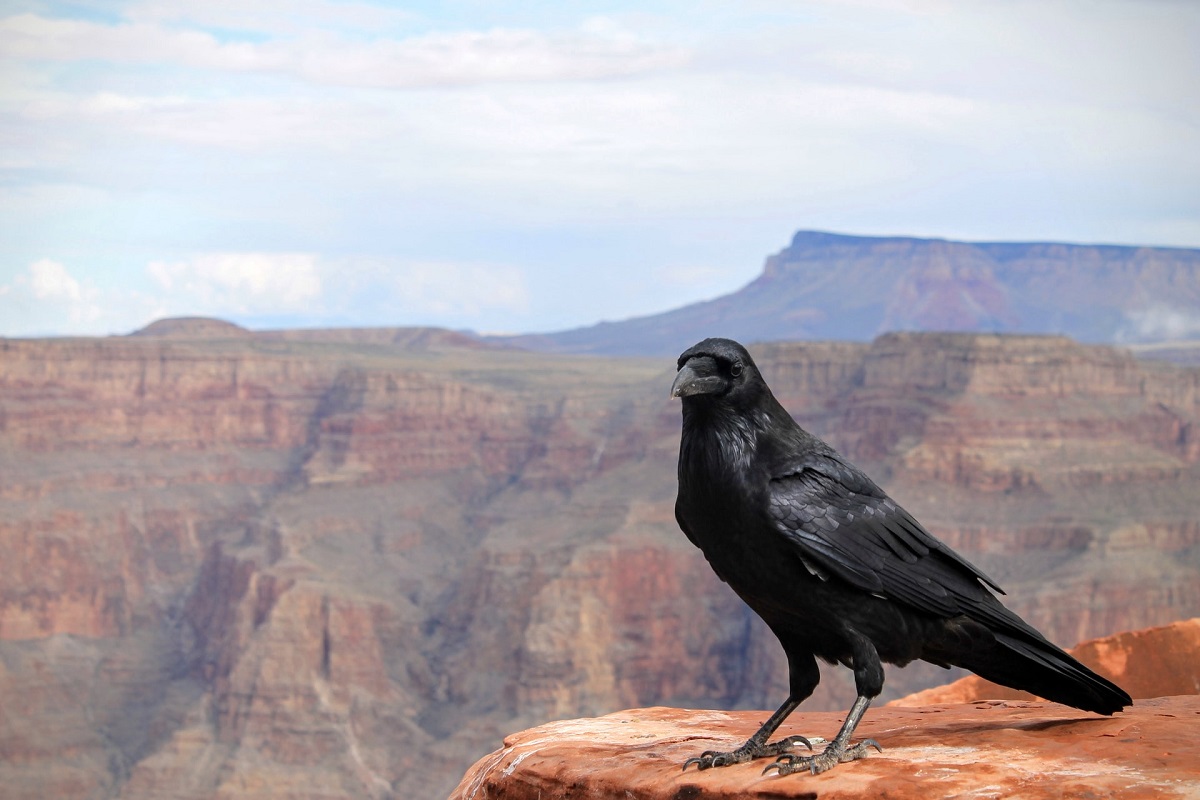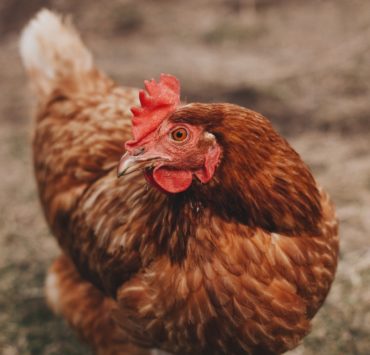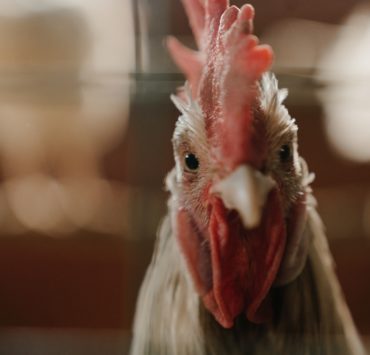
Crows often get a bad reputation, but these intelligent, social birds are some of the most fascinating visitors you can welcome into your backyard. Known for their sharp memory, complex communication skills, and resourceful behavior, crows are highly intelligent birds that can bring unexpected benefits to your outdoor space.
If you’re looking for a natural way to control pests, observe interesting bird behavior, or even build a relationship with wild birds, attracting crows might be your next backyard project.
In this guide, you’ll learn exactly how to attract crows to your yard, what to feed them, how to build trust, and common questions about crow behavior—including their rivalry with hawks, safety around chickens, and how to tell a crow from a raven.
Are Crows Smart?
Absolutely. In fact, crows are among the smartest birds in the world. While their brains are smaller than ours, their brain-to-body ratio is comparable to that of great apes, making them capable of incredible cognitive feats.
Crows Can:
- Recognize individual human faces
- Use tools to access food
- Solve multi-step puzzles
- Hold grudges or reward kindness
- Pass knowledge between generations
If you feed a crow regularly, don’t be surprised if it starts recognizing you—and possibly even bringing you shiny gifts in return.
That’s because these unique birds have the uncanny ability to recognize human faces, and not in general either. They can tell individual faces apart. They’ll know if they’ve seen you somewhere before. The next time you see them huddled together on a branch, cawing at each other and watching you, that’s probably because you’re the subject of their discussion!
Do Crows Attack Hawks?
Yes, and there’s a good reason. Crows see hawks as a threat, especially to their nests and young. To protect themselves, crows will often “mob” a hawk—gathering in groups to dive at and harass it until it leaves the area.
Crows attack hawks purely as a defense mechanism and often prefer to go on the offensive by pestering the predatory birds.
This defensive behavior is actually good news for backyard bird lovers. By attracting crows, you may be discouraging hawks from hanging around your property.
Will Crows Attack Chickens?
It’s a fair concern for backyard poultry owners. While crows rarely harm healthy adult chickens, they may steal eggs from unattended nests or target small or weak baby chicks.
To keep your flock safe:
- Use covered coops or secure runs
- Collect eggs frequently
- Monitor interactions with wild birds
But in general, crows are much more interested in easy meals than in picking a fight with a full-grown chicken.
Raven vs. Crow: What’s the Difference?
Ravens and crows belong to the same family—Corvidae—and share many traits. But there are a few key differences:
| Feature | Crow | Raven |
|---|---|---|
| Size | Medium-sized, about a pigeon and a half | Larger, closer in size to a Red-tailed Hawk |
| Tail Shape | Fan-shaped when spread | Wedge-shaped or diamond-shaped |
| Call | Loud “caw caw” | Deep, throaty “croak” |
| Social Behavior | Seen in large groups (murders) | Often in pairs or alone |
| Flight | Flaps frequently | Soars more, often glides |

When you look at them up close, the first apparent difference between them is the size difference. Ravens are a lot larger than crows, and their size is comparable to that of the Red-tailed Hawk.
Ravens are often seen traveling in pairs while crows move in larger groups. When you observe the flying overhead, you’ll also notice that the middle tail feathers of Ravens are longer, making them appear wedge-like when spread open. On the other hand, crows’ tail feathers are all the same length, giving them a fan-like appearance when spread open.
The differences don’t stop there. Crows make a cawing sound when calling, while ravens give off a lower croaking sound that often sounds like they’re screaming bloody murder when croaking in groups.
What Attracts Crows to a Yard?
If you have a pest problem in your backyard, crows are a simple, natural, and effective remedy. Not only will they get rid of grubs and insects that might be damaging your garden, but they’ll also eat waste grain that might be scattered around your yard. They’re also wildly fascinating creatures to watch as they bounce around your garden.
If you’re wondering how to attract crows to your backyard, it comes down to four key factors: food, water, routine, and safety.
1. Offer Their Favorite Foods
Crows aren’t picky, but they are cautious. To start, offer unsalted peanuts still in the shell—a well-known favorite. As they become comfortable, you can introduce:
- Fruits (grapes, apples, berries)
- Scrambled eggs
- Cat or dog kibble
- Cooked pasta
- Nuts and seeds
- Leftover grains
❌ Avoid processed or salty foods, and never offer anything moldy or spoiled.
2. Install a Bird Bath or Water Source
Installing a bird bath is probably the single, most important thing you can do to entice birds to your backyard. Water is an extremely important element for all birds, including crows. They need water for drinking, bathing, maintaining their feathers, and cooling off when the summer heat becomes too much to bear. Crows will flock to your bird bath in the warmer months and descend in the winter when resources become limited.
A simple bird bath, shallow basin, or even an upside-down garbage can lid filled with water can be enough to attract them—especially during hot summer months or dry seasons. Make sure to:
- Keep water fresh and clean
- Place it in an open, visible area
- Avoid overcrowding with other aggressive bird species
3. Create a Feeding Routine
Crows are creatures of habit. If you feed them at the same time each day, they’ll quickly learn your schedule—and show up on time!
- Pick a spot that’s easy for them to access and safe from predators.
- Use a shallow dish or platform feeder.
- Remove uneaten food at the end of the day to prevent pests.
Within a few days or weeks, you’ll likely notice familiar crows returning regularly.
4. Provide a Safe, Quiet Space
Crows are intelligent but cautious. They’re more likely to visit if your yard feels safe and quiet, especially away from barking dogs or loud machinery.
- Avoid using scare devices (like fake owls) near feeding areas
- Give them space—don’t approach too quickly
- Be patient and consistent
With time, crows may begin to trust you enough to feed nearby—or even interact with you.
Bonus Tip: Attract Crows Naturally with Yard Habitat
Crows are opportunistic foragers and will appreciate a natural yard that includes:
- Leaf litter (insects to forage)
- Trees or tall shrubs for perching
- Compost piles or garden beds (more bugs!)
- Nesting materials like sticks or twine
The more natural and wildlife-friendly your yard is, the more appealing it will be to crows and other beneficial birds.
| Task | Description |
|---|---|
| 🥜 Offer favorite foods | Start with unsalted peanuts, add fruits and kibble |
| 🐦 Install water | Use a bird bath or water basin year-round |
| 🕒 Feed consistently | Same time daily builds trust and routine |
| 🌳 Create a safe space | Limit disturbances and remove threats |
| 🌿 Encourage natural foraging | Add habitat features like leaf litter and trees |
Got Questions About Wild Bird Behavior?
Whether you’re bonding with crows or dealing with sick backyard birds, we’re here to help. Chat with a licensed avian veterinarian, explore more bird care guides, or find a local bird-friendly vet near you.
Are you wondering how to attract hummingbirds? Check out our blog to find out how to get them to flock to your yard.



